Dog Eyesight Problems, Every owner who cares for dogs must master dog eye functions. Visible perception stands as a crucial sensory tool for dogs making them able to search their environment handle their activities and avoid dangers. The visual system of dogs operates similarly to humans because dog species experience multiple canine vision problems. This piece investigates dog eye disorders together with their breed-related problems and signals when dogs start losing their vision.
How Does Dog Eyesight Work?

A dog interprets the world through different visual capabilities than human beings. As a result the dog’s eyes develop motion-based vision instead of providing detailed images. Dog Eyesight Problems, human beings perceive more colors compared to dogs who excel at detecting movement. The special detection ability of dogs does not necessarily help dogs with vision impairments.
A puppy normally develops better eyesight shortly after their birth. The opening of their eyes occurs during the second week after birth. Their visual abilities become operational just before several additional weeks have gone by. But, issues can develop early. So, monitor puppies’ eyesight closely.
Signs of Dog Eyesight Problems

Early identification of dog eyesight problems prevents the development of lasting damage to their vision. Here are key symptoms:
- Bumping into furniture
- Cloudy or red eyes
- Excessive tearing
- Pawing at the eyes
- Avoiding bright light
The listed signs point to typical eye conditions that canine patients experience. Obtain vet advice when you encounter these indications.
Common Eye Problems for Dogs
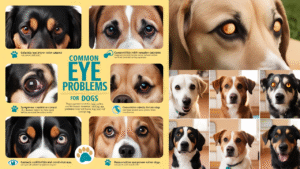
Several eye issues regularly affect dogs as part of their general health problems. Early medical treatment makes most eye conditions treatable in dogs. The following section analyzes the most commonly occurring types of dog eye problems:
1. Cataracts
Vision impairment caused by cataracts ranks as the main vision issue for dogs. The cloudiness that develops inside the lens will reduce a dog’s ability to see. The unattended condition causes dogs to lose their eyesight.
2. Glaucoma
The painful condition intensifies eye pressure levels. Eye doctors consider this issue to be among the most critical problems affecting dogs. Saving vision depends on making an early diagnosis of these problems.
3. Dry Eye (Keratoconjunctivitis Sicca)
The condition appears because eyes stop making enough tears for proper lubrication of the surface of the eye. The condition develops into irritation and ultimately creates ulcers while being a common reason behind dog eye problems.
4. Cherry Eye
Youthful dogs typically develop this condition which presents as a tear gland that protrudes from its place. The affliction stands as one of the prevalent eye conditions in dogs which demands surgical intervention to address it.
5. Progressive Retinal Atrophy (PRA)
The disease slowly causes dogs to lose their vision through genetic mechanisms. This condition cannot be reversed while it exists among multiple dog breeds.
Among all dog eye problems these represent only a few standard conditions. Certain dog breeds demonstrate higher risk for particular vision problems than other dog breeds.
Breed-Specific Canine Eye Problems

Breeds display different patterns of vision difficulties among themselves. The sight capacities of various dog breeds present visual differences in the following manner:
French Bulldog Eyesight
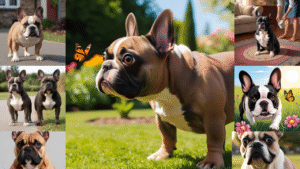
The distinctive short facial structure of the French bulldog causes reduced vision capability. French bulldogs typically experience three eye-related issues including dry eye together with cherry eye and ulcers. Regular monitoring of French bulldog eyes must occur to check for discharge or irritation applying to their vision.
Golden Retriever Eyesight

Most golden retrievers develop either cataracts or PRA which impairs their eyesight. Regular eye observation is important for dogs because their genetic condition puts them at risk. The appropriate treatment during early stages assists in slowing down the eyesight deterioration of Golden Retrievers.
Jack Russell Eyesight
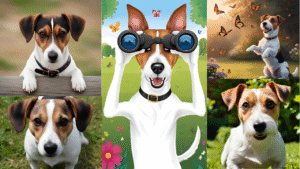
The eyesight of Jack russells typically remains clear although PRA stands as an ailment for this breed. Lens luxation together with PRA is one of the health issues that affect this specific breed. As a result they become exposed to the risk of losing their eyesight suddenly. Routine examinations maintain proper vision health for jack russells.
Poodle Eyesight
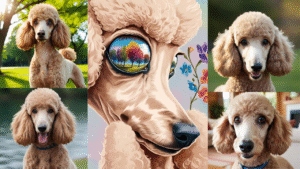
The eyes of Poodle dogs show signs of cataracts and PRA during their lifetime. Poodles of any size receive their eyesight disorders from hereditary factors. The purpose of these tests helps breeders identify these respective conditions.
Yorkie Eyesight

The eyesight of Yorkies is affected by dry eye conditions together with cataracts. Due to their tiny eyes, flying material creates quick discomfort. Properly cleaning yorkies eyes promotes their eyesight protection.
What to Do If Your Dog Is Losing Eyesight
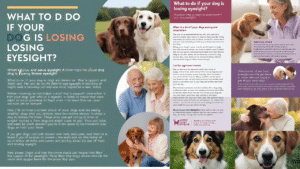
Losing eyesight in dogs should not produce panic reactions. Many dogs adjust well. The first step should involve visiting your vet to determine the underlying cause. Medication and surgical treatments might provide benefits for dogs suffering vision impairment.
- Building a protective environment within your home will help your dog.
- Avoid rearranging furniture
- Textured floor mats should be placed to help yorkies maintain direction.
- Speak clearly to comfort them
Assisting dogs who have vision limitations requires dedicated help. Through your assistance your dog can maintain a complete life even while losing eyesight.
How to Prevent Dog Eyesight Problems
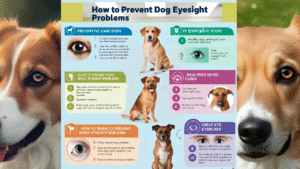
The prevention of dog eyesight problems starts through knowledge sharing along with constant eye health maintenance. When you clean your dog’s eyes perform the task carefully to stop infections from occurring. Vet-approved wipes as well as damp cotton balls serve as acceptable methods for cleaning. Exterior surface cleaners should stay far from the eye area.
Importantly, feed a balanced diet. Beta-carotene together with lutein and omega-3s from proper nutrition support healthy canine eyesight. The eye structures benefit from these protective substances because they shield both the retina and lens from harm. Your dog’s dietary intake should comprise both carrots, spinach and fish oil.
Eye safety should always be considered during dog playtime. Check that all toys have no dangerous cuts before letting your dog play with them. Open dogs need to stay out of locations containing tall bushes and dust-covered areas. Regular practice of these basic measures minimizes most frequent eye conditions that affect dogs.
Routine Vet Checks Are Vital
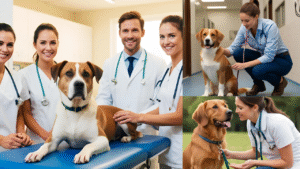
Regular visits to the veterinarian enable early detection of canine eye conditions that prevent them from worsening. A vet examination can identify glaucoma and cataracts together with retinal disorders. The check is crucial because specific breeds tend to develop vision problems.
Inquire from your vet about how often eye examinations should be performed. Senior dogs and poodles together with golden retrievers and jack russells and yorkies require increased care because of their inherited disorders. Regular eye checkups assist in detecting vision problems of dogs during their early stages.
Dogs Can Thrive with Vision Loss
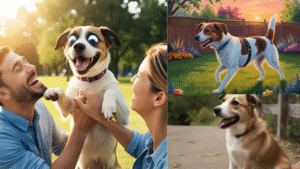
Your dog will retain its quality of life even though its eyesight fades away. Dogs mainly depend on their senses of smell and hearing. Proper guidance allows dogs with vision deficiencies to thrive in their daily life.
The use of verbal directives should replace hand-based instructions. Establishing a regular schedule will minimize the patterns of confusion your dog experiences. You should place aromatic markers throughout your home so your dog can follow their scent. Blind dogs typically adjust well according to their owners.
When caring for standard dog eye conditions and conditions affecting French bulldog eyesight or jack russell terrier eyesight you should always trust your knowledge as your primary defense. Every day dedicate yourself to eye observation and active protection of your dog’s eyes.
The sight capabilities of dogs prove to be advanced beyond initial human insights. From puppies’ eyesight to senior dogs, vision care matters. Check for symptoms which indicate vision impairment in dogs. Respond immediately whenever you notice any unusual symptoms.
These five canine breeds including the French bulldog and golden retriever and jack russell and poodle and yorkie possess their individual eye-related health concerns. Getting informed information serves as a protective measure for your pet.
By recognizing the standard eye troubles faced by dogs particularly their common conditions you will identify potential problems early. Appropriate pet care allows dogs to live normally despite their reduced eyesight abilities.
1. What are the most common dog eye problems?
The most common dog eye problems include cataracts, glaucoma, dry eye, cherry eye, and eye infections. These canine eye problems can affect dogs of all breeds and ages.
3. What causes eye problems in dogs?
Eye problems in dogs can be caused by genetics, infections, injuries, or aging. Some breeds are more prone to canine vision problems than others.
4. Can puppies have eyesight problems?
Yes, puppies' eyesight may develop abnormally due to congenital issues like juvenile cataracts or infections during the early stages of life.
5. Are some dog breeds more prone to vision problems?
Yes, certain breeds like French bulldogs, golden retrievers, jack russells, poodles, and yorkies often face specific canine eyesight issues.
6. How do I treat common canine eye problems at home?
While basic eye hygiene helps, most common eye problems for dogs need vet care. Avoid using human medications and seek professional advice.
7. What should I do if my dog suddenly goes blind?
If your dog is losing eyesight suddenly, seek emergency veterinary care. Sudden blindness may signal serious canine vision problems.
8. Can dogs live a normal life with vision loss?
Yes, dogs with vision problems can adapt well using their other senses. With training and a safe environment, they can live a happy life.
